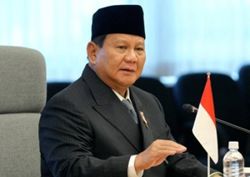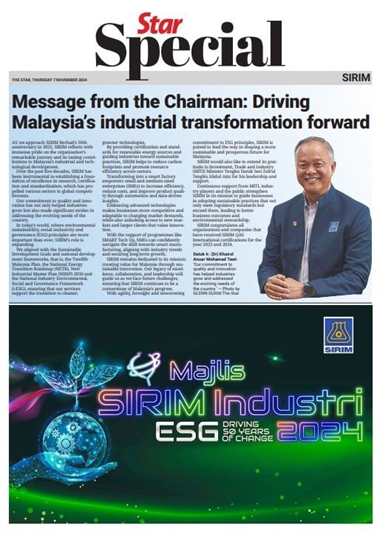
PETALING JAYA: Petronas Gas Bhd (PetGas) appears well-positioned to capitalise on the anticipated surge in gas demand, analysts say.
(PetGas) appears well-positioned to capitalise on the anticipated surge in gas demand, analysts say.
The demand is expected to be underpinned by Malaysia’s transition from coal to natural gas as a power source and growing power requirements from data centres.
As the country’s largest gas infrastructure owner and operator, the group has been eyeing new opportunities to expand its regasification, pipeline and power plant capacity.
According to TA Research, PetGas is “positioned well as one of the key upstream proxies to the transition from coal to gas power, as well as data centre-driven demand for power”.
The research house maintained its “buy” call on PetGas with an unchanged target price of RM20.30 per share, citing a decent dividend yield of 4.7% to 5.5% throughout its forecast horizon.
Hong Leong Investment Bank (HLIB) Research said it expected PetGas’ earnings to remain stable as its business segments were largely protected under the government’s Regulatory Asset Base structures, with the utilities segment somewhat shielded by the Imbalance Cost Pass-Through mechanism.
“We expect PetGas to continue to maintain its dividend payout given its healthy free cash flow of RM1.5bil to RM2bil a year and net cash position of 69.4 sen per share,” HLIB Research said.
It maintained a “hold” call with an unchanged target price of RM17.78.
The stock declined 0.34% yesterday to close at RM17.44.
Meanwhile, CGSI Research highlighted PetGas’ defensive earnings profile from its ownership of gas infrastructure in Malaysia.
While earnings growth was seen as “lacklustre”, the stock still offered “attractive yields of 4% to 5% from 2025 to 2026, backed by visible free cash flows and a strong net cash balance of RM748mil at the end of the fourth quarter of last year.”
The research house kept its “hold”’ recommendation for PetGas with a target price of RM17.50.
Maybank IB Research also maintained a cautious stance, lowering its 2025 and 2026 net profit forecasts by 1% and 3%, respectively, on “housekeeping” adjustments, and introduced its 2027 estimates.
It reduced its target price to RM17.60 from RM18 previously, citing management’s search for new projects, including two recently secured powe-plant concessions in Sabah and Labuan, which had yet to be reflected in its forecasts.
PetGas had been making strides in new projects, receiving the Letter of Notification for its 120MW gas power plant in Labuan last Friday.
The project was set to progress into the construction phase by the second half of this year.
The group also broke ground on its fast-track 100MW gas plant in Kimanis, Sabah, last November, with construction progressing smoothly and commercial operations expected by March 2026.
The Kimanis plant, developed via a 60:40 joint venture with NRG Consortium Sabah, a subsidiary of Yayasan Sabah, was a brownfield development next to the existing Kimanis power plant, involving capital expenditure (capex) of RM700mil.
The Labuan project, a greenfield development under a similar joint venture with a Sabah state-owned company, had a higher expected capex of just under RM1bil.
Management had also been evaluating the need for a new regasification terminal within the next three to four years to support Malaysia’s rising gas demand.
PetGas’ current two regasification terminals at Sungai Udang in Melaka and Pengerang in Johor were operating at approximately 60% utilisation, with full capacity anticipated within the next one to two years.
The group’s utilities segment could potentially benefit from a tariff revision by Tenaga Nasional Bhd in the second half of this year.
in the second half of this year.
“Provided fuel-gas cost remains stable, we believe the utilities segment could see improved earnings in the second half of this year,” said TA Research.
In the gas-processing segment, PetGas would enter the second year of its third Term Gas Processing Agreement with parent company Petroliam Nasional Bhd.
The agreement entails a higher fixed fee of RM1.7bil, up from RM1.61bil previously, and a performance fee of RM120mil, versus RM90mil previously.
However, part of the benefit might be offset by rising operating expenses as the plants aged.
Looking ahead, government projections indicated Malaysia’s power demand could double by 2040, which, if gas maintains its 40% share of the energy mix, would drive substantial long-term demand for gas and supporting infrastructure.
While PetGas’ defensive earnings profile suggested limited near-term growth, its strategic investments and positioning in gas infrastructure provide a stable outlook, bolstered by steady dividends and the potential for expansion amid Malaysia’s energy transition, the research house said.









































